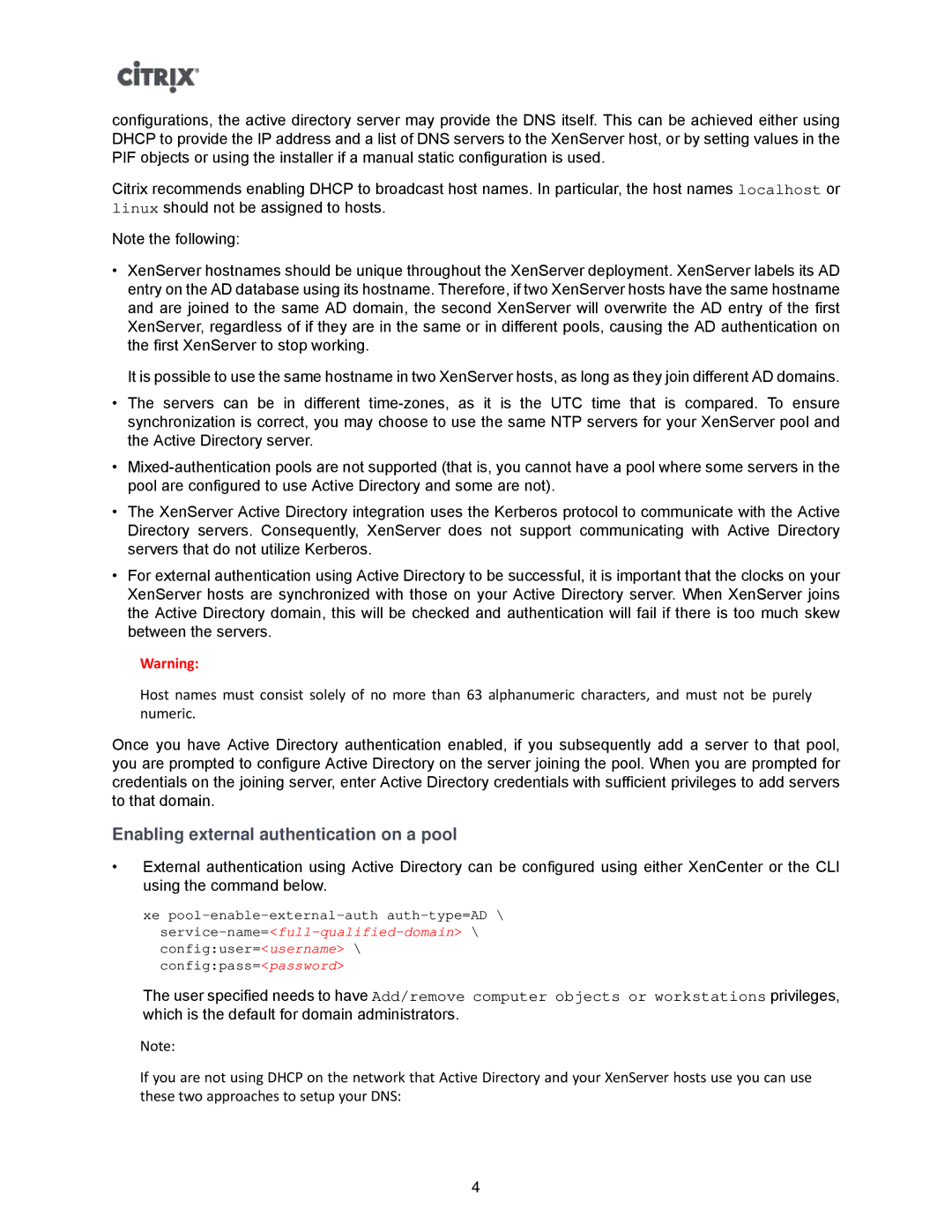configurations, the active directory server may provide the DNS itself. This can be achieved either using DHCP to provide the IP address and a list of DNS servers to the XenServer host, or by setting values in the PIF objects or using the installer if a manual static configuration is used.
Citrix recommends enabling DHCP to broadcast host names. In particular, the host names localhost or linux should not be assigned to hosts.
Note the following:
•XenServer hostnames should be unique throughout the XenServer deployment. XenServer labels its AD entry on the AD database using its hostname. Therefore, if two XenServer hosts have the same hostname and are joined to the same AD domain, the second XenServer will overwrite the AD entry of the first XenServer, regardless of if they are in the same or in different pools, causing the AD authentication on the first XenServer to stop working.
It is possible to use the same hostname in two XenServer hosts, as long as they join different AD domains.
•The servers can be in different
•
•The XenServer Active Directory integration uses the Kerberos protocol to communicate with the Active Directory servers. Consequently, XenServer does not support communicating with Active Directory servers that do not utilize Kerberos.
•For external authentication using Active Directory to be successful, it is important that the clocks on your XenServer hosts are synchronized with those on your Active Directory server. When XenServer joins the Active Directory domain, this will be checked and authentication will fail if there is too much skew between the servers.
Warning:
Host names must consist solely of no more than 63 alphanumeric characters, and must not be purely numeric.
Once you have Active Directory authentication enabled, if you subsequently add a server to that pool, you are prompted to configure Active Directory on the server joining the pool. When you are prompted for credentials on the joining server, enter Active Directory credentials with sufficient privileges to add servers to that domain.
Enabling external authentication on a pool
•External authentication using Active Directory can be configured using either XenCenter or the CLI using the command below.
xe
The user specified needs to have Add/remove computer objects or workstations privileges, which is the default for domain administrators.
Note:
If you are not using DHCP on the network that Active Directory and your XenServer hosts use you can use these two approaches to setup your DNS:
4
